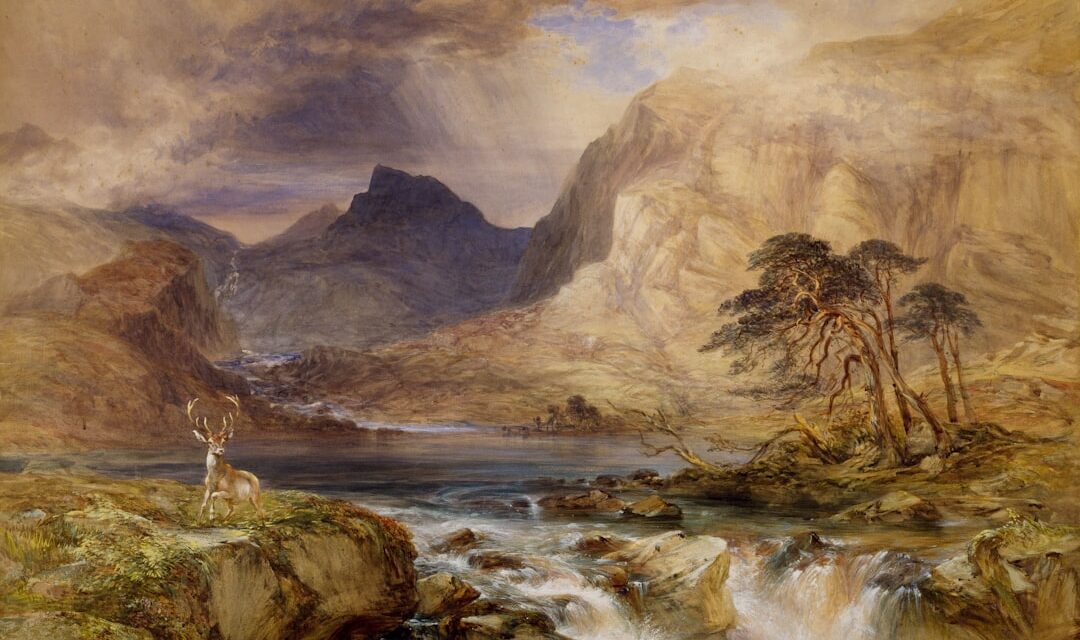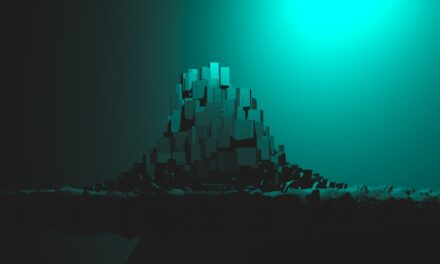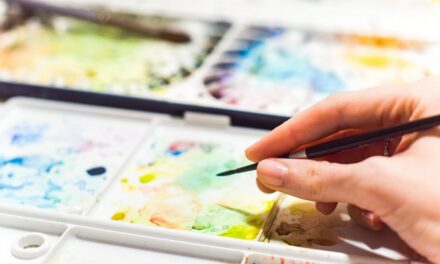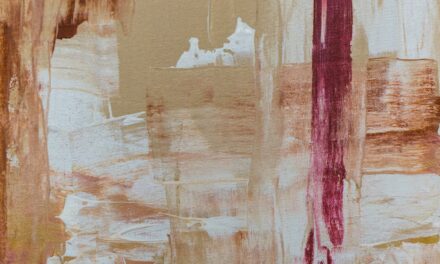Chiaroscuro, a term derived from the Italian words “chiaro” meaning light and “scuro” meaning dark, has its roots in the Renaissance period, a time marked by a profound transformation in artistic expression and technique. This concept emerged as artists sought to create a more realistic representation of the human form and the natural world. The interplay of light and shadow became a crucial element in achieving depth and volume in their works.
Early practitioners of chiaroscuro were influenced by the study of human anatomy and the observation of natural light, which led to a more nuanced understanding of how light interacts with surfaces. This exploration was not merely technical; it was also philosophical, as artists began to consider how light could convey emotion and narrative within their compositions. The origins of chiaroscuro can also be traced back to earlier artistic traditions, including the use of light and shadow in ancient Greek and Roman art.
However, it was during the Renaissance that these techniques were refined and elevated to new heights. Artists like Leonardo da Vinci and Caravaggio played pivotal roles in popularising chiaroscuro, employing it to create dramatic contrasts that heightened the emotional impact of their works. The technique allowed for a more dynamic representation of figures, as it provided a sense of three-dimensionality that was previously unattainable.
As chiaroscuro evolved, it became a fundamental aspect of Western art, influencing countless artists and movements throughout history.
Summary
- Chiaroscuro originated in the Renaissance period in Italy, with artists like Leonardo da Vinci and Caravaggio using it to create dramatic lighting effects.
- Chiaroscuro is all about the contrast between light and shadow, creating depth and volume in artworks.
- Throughout art history, Chiaroscuro has been used to evoke emotion and drama, particularly in Baroque and Romantic paintings.
- Artists use various techniques such as hatching, cross-hatching, and blending to achieve Chiaroscuro effects in their drawings and paintings.
- Famous artists like Rembrandt, Vermeer, and Goya are known for their masterful use of Chiaroscuro in their artworks.
Understanding Chiaroscuro: Light and Shadow
The Power of Contrast
The strategic placement of highlights and dark areas can guide the viewer’s eye, directing attention to focal points within the artwork. This technique not only enhances visual interest but also contributes to the narrative quality of the piece. Moreover, understanding chiaroscuro involves recognising how different light sources affect the perception of colour and form.
Natural and Artificial Light
Natural light, for instance, varies throughout the day, casting different shadows and creating unique atmospheres. Artists often study these changes to capture the essence of a moment or scene accurately. In contrast, artificial light can produce stark contrasts that may evoke feelings of drama or tension.
Mastering Chiaroscuro
By mastering the principles of chiaroscuro, artists can manipulate these effects to create mood and emotion, transforming a simple depiction into a powerful visual statement. This understanding is crucial for anyone looking to explore the depths of artistic expression through light and shadow.
Chiaroscuro in Art History

Throughout art history, chiaroscuro has played a significant role in shaping various movements and styles. During the Renaissance, artists such as Leonardo da Vinci and Michelangelo employed this technique to enhance their depictions of human figures, imbuing them with a sense of realism that had not been seen before. Da Vinci’s “The Virgin of the Rocks” exemplifies this mastery; the interplay of light and shadow not only defines the figures but also creates an ethereal atmosphere that draws viewers into the scene.
Similarly, Michelangelo’s sculptures exhibit a profound understanding of how light interacts with form, allowing for an almost lifelike quality that captivates audiences even today. As art progressed into the Baroque period, chiaroscuro took on new dimensions with artists like Caravaggio leading the charge. His dramatic use of light and shadow created intense emotional narratives that resonated deeply with viewers.
Caravaggio’s works often featured stark contrasts between illuminated figures and dark backgrounds, heightening the sense of drama and tension within his compositions. This approach influenced countless artists across Europe, leading to the development of tenebrism—a style characterised by extreme contrasts between light and dark. The legacy of chiaroscuro continued into later movements such as Romanticism and Realism, where artists continued to explore its potential for conveying emotion and depth.
Chiaroscuro Techniques in Drawing and Painting
In both drawing and painting, chiaroscuro techniques are essential for achieving depth and realism. In drawing, artists often employ hatching and cross-hatching techniques to create gradients of light and shadow. By varying the density and direction of lines, they can suggest volume and form effectively.
This method allows for a tactile quality that invites viewers to engage with the artwork on a deeper level. Additionally, charcoal is frequently used in drawing due to its ability to produce rich blacks and soft greys, making it an ideal medium for exploring chiaroscuro effects. Artists can blend charcoal with their fingers or tools to create smooth transitions between light and dark areas, enhancing the overall impact of their work.
In painting, chiaroscuro techniques are often achieved through layering colours and glazes. Artists may begin with an underpainting in neutral tones to establish values before applying layers of colour that reflect light differently. The use of transparent glazes allows for subtle shifts in tone that can mimic the effects of natural light.
Moreover, brushwork plays a crucial role; varying brush strokes can create texture that interacts with light in unique ways. The application of impasto—where paint is laid on thickly—can also enhance highlights, making certain areas pop against darker backgrounds. Mastering these techniques enables artists to create compelling compositions that draw viewers into their visual narratives.
Famous Artists Known for Chiaroscuro
Several renowned artists have become synonymous with chiaroscuro due to their innovative use of light and shadow in their works. One such figure is Caravaggio, whose dramatic lighting techniques revolutionised Baroque painting. His ability to create intense contrasts between illuminated subjects and dark backgrounds not only heightened emotional tension but also brought a sense of realism that was groundbreaking for his time.
Works like “Judith Beheading Holofernes” exemplify his mastery; the stark lighting draws attention to the figures while enveloping the scene in an almost theatrical darkness. Caravaggio’s influence extended far beyond his lifetime, inspiring generations of artists who sought to emulate his dramatic style. Another pivotal artist in the realm of chiaroscuro is Rembrandt van Rijn, whose exploration of light was deeply introspective.
Rembrandt’s portraits are celebrated for their rich tonal variations that convey both character and emotion. His use of chiaroscuro not only defined his subjects but also created an intimate atmosphere that invites viewers into their world. In works such as “The Night Watch,” Rembrandt skillfully balances light and shadow to guide the viewer’s gaze across the composition while simultaneously creating a sense of movement within the scene.
His innovative approach has left an indelible mark on art history, solidifying his status as one of the masters of chiaroscuro.
Contemporary Applications of Chiaroscuro

The Evolution of Chiaroscuro in Modern Art
Whilst traditional painting methods remain popular, modern artists often experiment with new technologies and materials to explore the interplay between light and shadow in innovative ways. For example, digital artists utilise software tools that allow them to manipulate light sources dynamically, creating striking visual effects that challenge conventional perceptions of space and form.
New Avenues for Experimentation
This digital approach opens up new avenues for experimentation, enabling artists to push the boundaries of chiaroscuro beyond what was previously possible. Moreover, contemporary installations frequently incorporate chiaroscuro principles to create immersive experiences for viewers. Artists may use lighting design strategically within their installations to evoke specific moods or highlight particular elements within their work.
Transforming Environments into Dynamic Artworks
By manipulating shadows and highlights in physical spaces, they can transform environments into dynamic artworks that engage audiences on multiple sensory levels. This evolution reflects a broader trend in contemporary art where traditional techniques are reinterpreted through modern lenses, allowing chiaroscuro to remain relevant while adapting to new artistic contexts.
Chiaroscuro in Photography
Chiaroscuro has found a significant place within photography as well, where photographers harness natural and artificial light to create striking contrasts that evoke emotion and drama. The ability to manipulate light through camera settings—such as exposure time and aperture—allows photographers to capture scenes with remarkable depth and richness. By carefully considering how light interacts with subjects, photographers can produce images that resonate with viewers on an emotional level.
The play between highlights and shadows can transform an ordinary scene into something extraordinary, inviting contemplation about the subject matter. In portrait photography, chiaroscuro techniques are particularly effective in conveying character and mood. Photographers often use directional lighting to sculpt faces, accentuating features while casting shadows that add depth to their subjects.
This approach not only enhances visual interest but also creates an intimate connection between the viewer and the subject. Renowned photographers like Yousuf Karsh have mastered this technique; his iconic portraits reveal how chiaroscuro can elevate photography from mere documentation to an art form that captures the essence of humanity.
Tips for Creating Chiaroscuro Artworks
For those looking to explore chiaroscuro in their own artworks, several tips can help enhance their understanding and execution of this powerful technique. First and foremost, it is essential to study how light behaves in different environments; observing natural light at various times of day can provide valuable insights into how shadows shift and change. Artists should take note of how light interacts with different surfaces—smooth versus textured—and how these interactions affect overall composition.
Practising sketching from life can also help develop an intuitive sense for capturing these dynamics effectively. Additionally, experimenting with various mediums can yield exciting results when exploring chiaroscuro effects. Whether working with charcoal, oil paints or digital tools, each medium offers unique possibilities for manipulating light and shadow.
Artists should not shy away from making bold contrasts; sometimes, embracing extremes can lead to striking outcomes that capture attention immediately. Finally, seeking inspiration from historical masters while developing one’s own style can provide guidance on how best to incorporate chiaroscuro into personal artistic practice. By combining observation with experimentation, artists can unlock new dimensions within their work through this timeless technique.
For those intrigued by the dramatic interplay of light and shadow in art, the technique of chiaroscuro offers a fascinating study. A deeper understanding of this method can be significantly enhanced by exploring specific artworks that exemplify its application. An excellent example can be found in the analysis of “Ecce Homo” (c. 1849-1852) by Honoré Daumier, where chiaroscuro is employed to powerful effect, highlighting the emotional intensity and human drama of the scene. To explore this further, you might find it beneficial to read An Introduction to the Painting “Ecce Homo” by Honoré Daumier, which provides insightful commentary on how Daumier’s use of light and shadow serves to enhance the thematic depth of his work.




